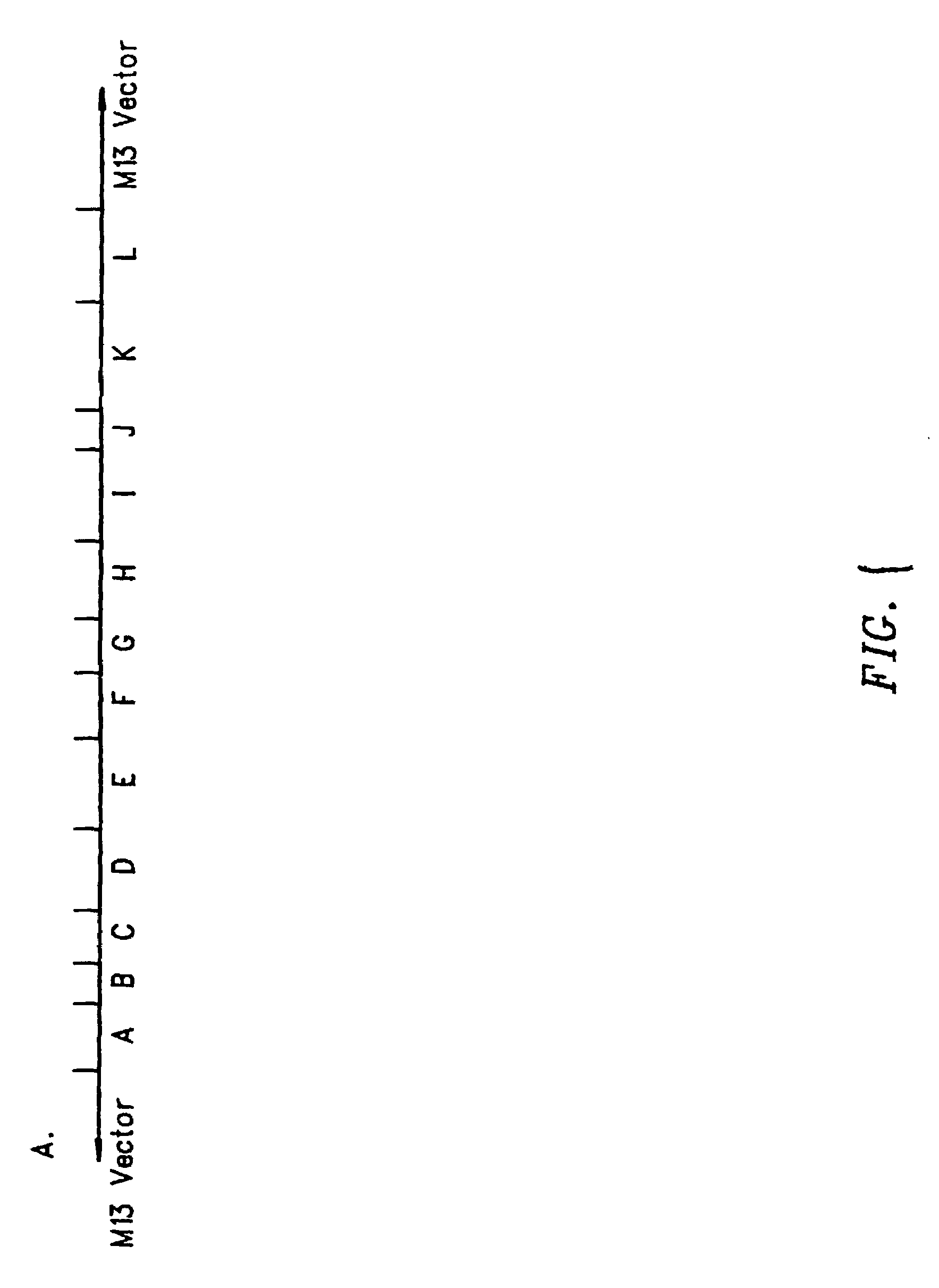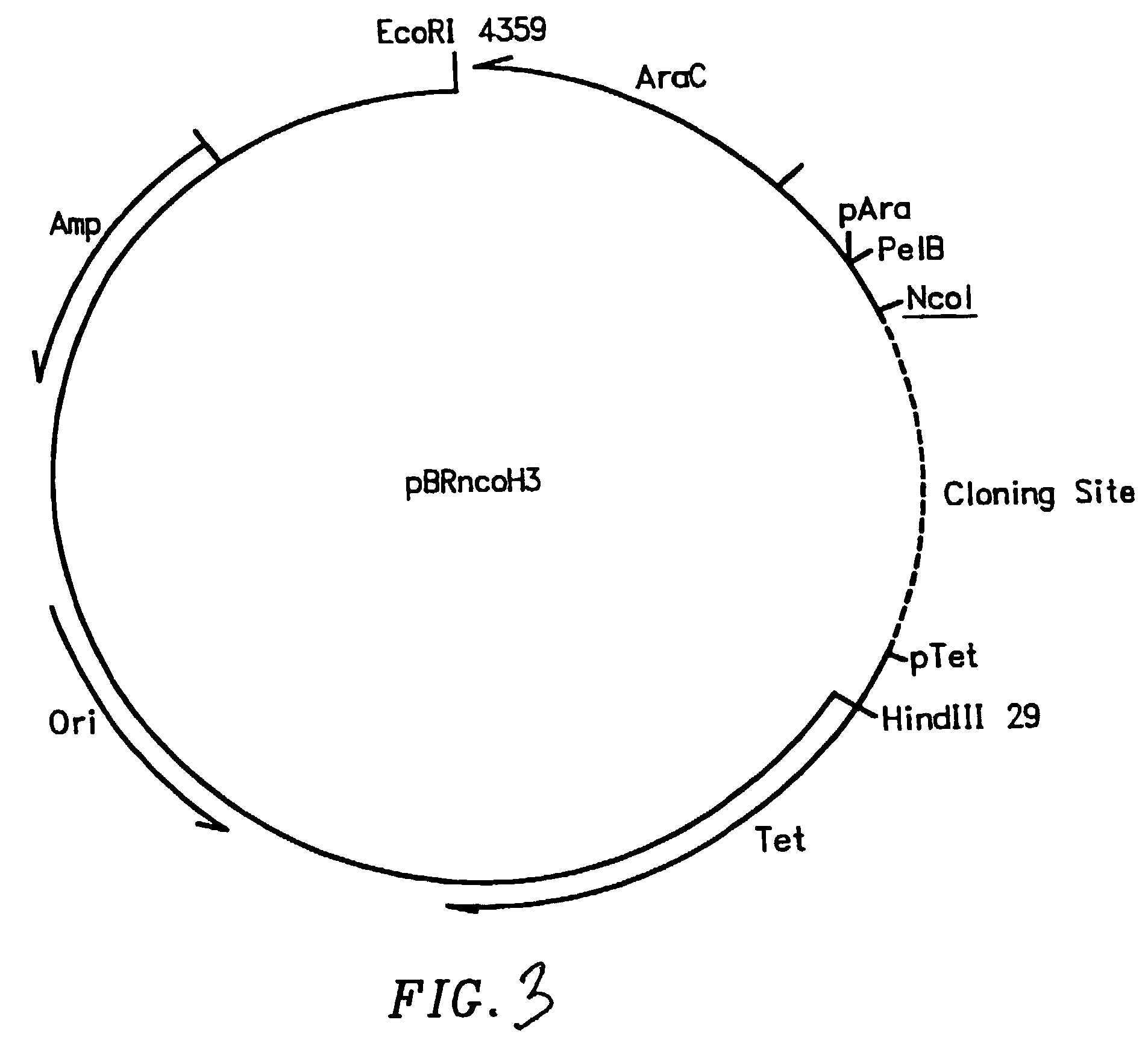Human antibodies
a technology of human antibodies and antibodies, applied in can solve the problems of inability to use in vivo, inability to use conventional technology for producing murine monoclonals, and inability to apply unmodified human antibody production to the field of human antibodies
- Summary
- Abstract
- Description
- Claims
- Application Information
AI Technical Summary
Benefits of technology
Problems solved by technology
Method used
Image
Examples
example 1
Purification of RNA from Mouse Spleens
[0186]Mice having 3 different sets of human heavy chain genes were used to make the antibody phage libraries to interleukin 8. Production of mice is described in Examples 23 and 24. The mice were immunized with interleukin 8 (Example 1). Mice were immunized with 25 microgram of antigen at 0.713 mg / ml. In a first procedure, mice were immunized once a month beginning with CFA followed by IFA until a high human gamma titer was reached (ca 6500) after a further six weeks, mice were boosted ip on days −7, −6, −5, and sacrificed 5 days later. In an alternative procedure, mice were immunized every two weeks beginning with CFA and followed by IFA. After a high human gamma titer was reached, mice were boosted on days −3, and −2 and sacrificed two days later.
[0187]The spleens were harvested in a laminar flow hood and transferred to a petri dish, trimming off and discarding fat and connective tissue. The spleen was, working quickly, macerated with the plun...
example 2
Preparation of Complementary DNA (cDNA)
[0188]The total RNA purified as described above was used directly as template for cDNA. RNA (50 μg) was diluted to 100 μL with sterile water, and 10 μL-130 ng / μL oligo dT12 (synthesized on Applied Biosystems Model 392 DNA synthesizer at Biosite Diagnostics) was added. The sample was heated for 10 min at 70° C., then cooled on ice. 40 μL 5×first strand buffer was added (Gibco / BRL, Gaithersburg, Md.), 20 μL 0.1 M dithiothreitol (Gibco / BRL, Gaithersburg, Md.), 10 μL 20 mM deoxynucleoside triphosphates (dNTP's, Roche Molecular Biochemicals, Indianapolis, Ind.), and 10 μL water on ice. The sample was then incubated at 37° C. for 2 min. 10 μL reverse transcriptase (Superscript™ II, Gibco / BRL, Gaithersburg, Md.) was added and incubation was continued at 37° C. for 1 hr. The cDNA products were used directly for polymerase chain reaction (PCR).
example 3
Amplification of Human Antibody Sequence cDNA by PCR
[0189]The cDNA of four mice having the genotype HCo7 was amplified using 3-5′ oligonucleotides and 1-3′ oligonucleotide for heavy chain sequences (Table A), and 10-5′ oligonucleotides and 1-3′ oligonucleotide for the kappa chain sequences (Table B). The cDNA of one mouse having the genotype HCo12 was amplified using 5-5′ oligonucleotides and 1-3′ oligonucleotide for heavy chain sequences (Table C), and the oligonucleotides shown in Table B for the kappa chain sequences. The cDNA of two mice having the genotype HCo7 / Co12 was amplified using the oligonucleotide sequences shown in Tables A and C for the heavy chain sequences and oligonucleotides shown in Table B for the kappa chain sequences. The 5′ primers were made so that a 20 nucleotide sequence complementary to the M13 uracil template was synthesized on the 5′ side of each primer. This sequence is different between the H and L chain primers, corresponding to 20 nucleotides on the...
PUM
| Property | Measurement | Unit |
|---|---|---|
| Fraction | aaaaa | aaaaa |
| Fraction | aaaaa | aaaaa |
| Fraction | aaaaa | aaaaa |
Abstract
Description
Claims
Application Information
 Login to View More
Login to View More - R&D
- Intellectual Property
- Life Sciences
- Materials
- Tech Scout
- Unparalleled Data Quality
- Higher Quality Content
- 60% Fewer Hallucinations
Browse by: Latest US Patents, China's latest patents, Technical Efficacy Thesaurus, Application Domain, Technology Topic, Popular Technical Reports.
© 2025 PatSnap. All rights reserved.Legal|Privacy policy|Modern Slavery Act Transparency Statement|Sitemap|About US| Contact US: help@patsnap.com



